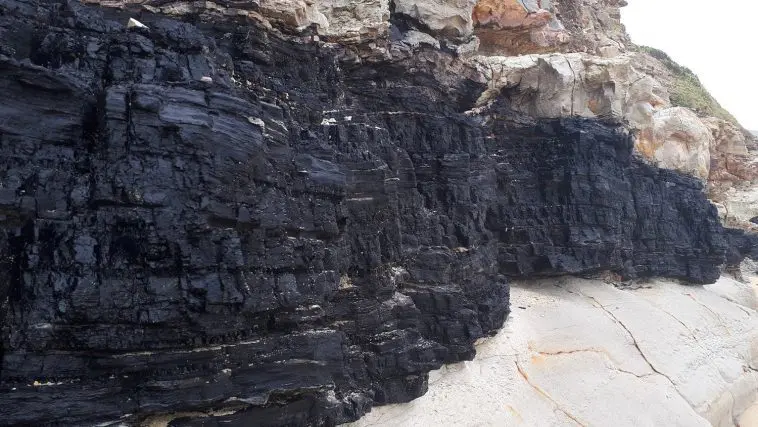People have used coal for energy for several centuries now, and we continue to use it in vast quantities. But we haven’t even come close to running out yet. Where did all that coal come from?
It is common knowledge that coal formed during the worldwide flood when plants were buried and then, by heat and pressure, turned into coal. The world has used up a lot of the coal reserves to date, but the USA has more than an estimated 471 billion tons yet to be tapped into. Canada, Australia, China, and other countries also have huge reserves.
Many times coalfields aren’t just found in one bed but multiple coal beds stacked between other rock layers. With the world having already used so much coal for so long and still having huge amounts in reserve, how did we get it all?
Here are the problems
If all the plant material living today were converted to coal, it would amount to an estimated 3% of the earth’s coal reserves. If we still have all of this coal, then where did all the vegetation needed to form coal come from?
Today, more than half the world’s land surfaces can’t support much plant life, if any. There are ice fields, mountains, and deserts. If you look at a globe, you will find that the continent of Antarctica is massive, along with Greenland and the Artic. Look at Africa’s Sahara Desert and central Australian deserts. Look at the area the Himalayan mountains cover.
We know that the earth’s surface is about 30 percent land and 70 percent ocean. However, it is quite possible that God had originally created a much larger land surface on Day 3 of creation week (Genesis 1:9–10). It was only after the flood that the continents were formed into what we see today.
Plus, there is fossil evidence that plants were once larger than what we see today. The fossil finds of pre-flood plants give us a view of how different early vegetation was thousands of years ago.
Researchers have studied coal seams and discovered they are often made from lycopod trees (giant relatives of today’s tiny plants called club mosses), giant ferns, conifers, and giant rushes. Many of the plants that grew preflood don’t exist in our modern world. Many of these plants had hollow stems and roots and were not designed for growing in soil but for floating on water. It is possible that before the flood, there were huge floating forest ecosystems.
Today we have a tiny equivalent when we see mats of spongy bog vegetation that floats over lakes. It’s possible that the pre-flood world had huge floating forests that grew out from the coastlines.
If half of the planet was once a single massive land mass surrounded by floating forest mats that covered large portions of the ocean, and plants were larger than we have today, we can find an answer to the question: where did all this coal come from?
When the worldwide flood of Noah’s day came, it swept over the land, burying the vegetation in beds between rock layers. The pressure and heat at these depths converted these beds of plants into coal within a matter of months.
When we see coal, we are reminded of God’s judgment of the flood, but we also know that God provided an important energy source that we use today.
Come and see what God has done, his awesome deeds for mankind! Psalms 66:5







This is very interesting, especially the remark about how all our vegetation today would only amount to about 3% of coal reserves.
The remark about how many plants could have lived on the water is very interesting too.
Also, I’ve heard and seen some evidence that at least some trees pre-flood were massive, perhaps miles in diameter. Talking directly with coal miners about what they’ve seen would be enlightening on this subject.
Science was never meant to provide answers about the past, before controlled observations and experimentation. That is beyond the philosophical and logical limits of our attempts to understand the world around us (the natural world) using the natural means available to us. Hutton, Lyell, Darwin, and many others introduced the practice of making naturalistic assumptions, “extrapolating” to the point of jumping to conclusions and considering that “science.” Now we find ourselves playing a similar game to counter silly claims that have accumulated an air of unquestionable truth. We don’t know what the pre-Flood world looked like, and we are extremely limited in our ability to figure that out from what remains. Articles like this provide examples of alternatives to the standard “scientific” stories, alternatives which fit the timeline of history indicated by the account of the generations since Adam. Some people will never accept such alternatives, and others know they can simply trust the Bible, but it is good to provide such material for all the people in-between.
Sorry, there is no way I can put this continent division (pangea) into a creationist timeframe. We know that the continents are moving apart an inch a year. Reverse it and it’s around 250 million years. If you break that timeframe down to 1,000 years, which would be way to long for creationists, it will still cause chaos that in no way matches history for the earth’s records since the time of the presumed worldwide flood. And if you want to say, then Pangea did not happen, you still have to deal with the division of continents at its current rate and reverse it and deal with the history within the creationists timeframe. There is no way it works. And as a creationist, I’m sure that timeframe must be around a couple of years instead of 1,000 that I propose. That would make it impossible, and if not, how?
You might find this article and the work from Dr. Clarey and others on “Catastrophic Plate Tectonics” helpful, Paul: https://www.icr.org/article/embracing-catastrophic-plate-tectonics
Additionally. Taking into account all the information proposed concerning plant life of how much and how big it was does not make a good case for the coal layers thickness when considering the weight and pressure, and heat of the land on top of the plants, if everything happened so quickly. There would not have been enough plants to produce the amount of coal, however if a longer time was taken into consideration, much more plants would have been compressed and much more coal.
This might help you understand what we’re seeing in the coal, Paul: https://answersingenesis.org/biology/plants/how-did-we-get-all-this-coal/